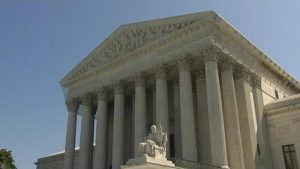 How Does the U.S. Supreme Court case , Roman Catholic Diocese of Brooklyn, New York v. Andrew M. Cuomo, Governor of New York, 592 U.S. _____, 2020 WL 6948354 (11.25.2020) impact Governor Baker’s Orders relative to Houses of Worship. The Supreme Court wrote its decision regarding whether Governor Cuomo could treat businesses differently regarding restrictive lockdowns. This emergency application and another, Agudath Israel of America, et al. v. Cuomo, No. 20A90, present the same issue, and this opinion addresses both cases. Both applications sought relief from an Executive Order issued by the Governor of New York that imposes very severe restrictions on attendance at religious services in areas classified as “red” or “orange” zones. In red zones, no more than 10 persons may attend each religious service, and in orange zones, attendance is capped at 25.
How Does the U.S. Supreme Court case , Roman Catholic Diocese of Brooklyn, New York v. Andrew M. Cuomo, Governor of New York, 592 U.S. _____, 2020 WL 6948354 (11.25.2020) impact Governor Baker’s Orders relative to Houses of Worship. The Supreme Court wrote its decision regarding whether Governor Cuomo could treat businesses differently regarding restrictive lockdowns. This emergency application and another, Agudath Israel of America, et al. v. Cuomo, No. 20A90, present the same issue, and this opinion addresses both cases. Both applications sought relief from an Executive Order issued by the Governor of New York that imposes very severe restrictions on attendance at religious services in areas classified as “red” or “orange” zones. In red zones, no more than 10 persons may attend each religious service, and in orange zones, attendance is capped at 25.
In striking contrast, while in a red zone a synagogue or church may not admit more than 10 persons, Governor Cuomo’s orders allowed businesses categorized as “essential” may admit as many people as they wish. The list of “essential” businesses includes such services as acupuncture facilities, camp grounds, garages, as well as many whose services are not limited to those that can be regarded as essential, such as all plants manufacturing chemicals and microelectronics and all transportation facilities. Moreover, the disparate treatment is even more striking in an orange zone. While attendance at houses of worship is limited to 25 persons, even non-essential businesses may decide for themselves how many persons to admit. To read the details of the entire case, go to 20A87 Roman Catholic Diocese of Brooklyn v. Cuomo (11/25/2020) (supremecourt.gov).
In the Diocese of Brooklyn case , the U.S. Supreme Court held that the Archdiocese has a likelihood of prevailing on the merits of the case, and upheld an injunction issued against the State of New York, which barred the State from limiting attendees to 10 persons in congregations in “red zone” areas and 25 persons in “Orange zone” areas in NYC. To learn about how this case impacts Massachusetts go to the Final Memorandum US Supreme Court Case NY 12.4.2020 (1)

0 Comments